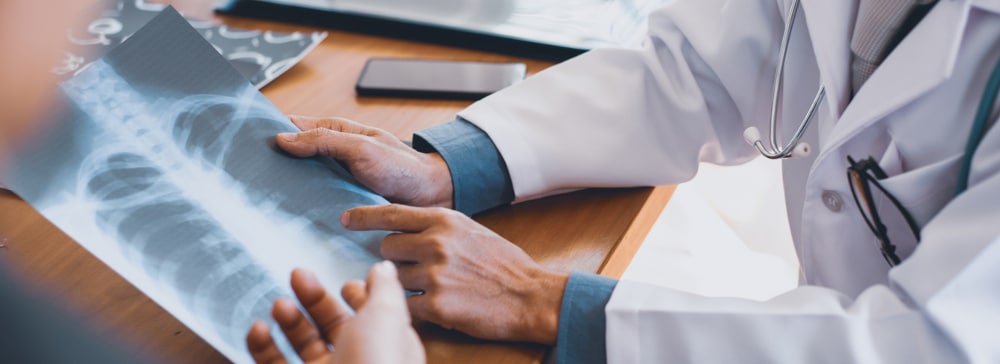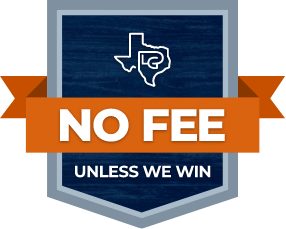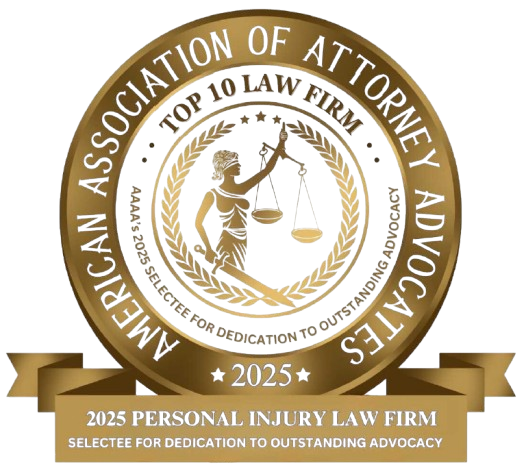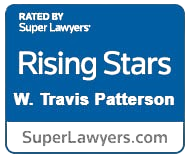Speeding is a key causal factor in many accidents, shortening the amount of time available to react to a hazard or correct a mistake. Speeding has been a factor in more than 25 percent of traffic fatalities.
Victims injured by speeding drivers can face life-altering changes and expenses due to someone else’s recklessness. If your life has been affected by a speeding driver, contact Patterson Law Group. Our experienced attorneys can review your case, refer to professionals for evidence like forensic mechanics to determine vehicle speed after a crash, and negotiate with insurance companies or fight in court.
Common Injuries from Speeding Accidents

Speeding is often a factor in many accidents, exacerbating injuries as higher speeds increase the force of impact.
Some of the most common car accident injuries from speeding include:
- Whiplash
- Traumatic brain injuries, such as concussions, contusions, and hematomas
- Lacerations
- Burns
- Spinal cord injuries that can involve permanent disabilities;
- Post-traumatic stress disorder from injuries or the events of the accident
- Broken bones
These injuries are painful and debilitating, many are permanent, and others can require long periods of recovery. Either as an immediate result of the crash or after an extended period, these injuries can lead to the premature death of the victim.
Common Types of Speeding Accidents
The failure to control speed is a leading cause of crashes in Texas. The nature of these accidents varies, as does the amount of damage done to both the vehicle and occupants. The extent of the damage incurred depends upon the location of the impact, size and weight of the vehicles, and speed that they were traveling at, among other factors.
Some of the most common types of accidents where speeding is a causal or exacerbating factor include:
- Front-end collisions, also known as Head-on collisions, despite being rare, are some of the most deadly, as the momentum of both vehicles directly contributes to the impact;
- Side impact collisions, also known as T Bone collisions, occur when the front of one vehicle strikes the side of another. These tend to produce serious injuries as the side panels offer little protection and can be crushed inwards, striking the occupants with broken glass and jagged metal. At high speeds, these collisions can cause rollovers;
- Rollover accidents are particularly serious accidents where a vehicle will roll onto its side or roof, often destroying the car or truck and injuring the occupants. In these accidents, the roof may crush inwards, injuring the occupants under the weight of the vehicle;
- Rear-end collisions often result from following too closely, or “tailgating.” At high speeds, rear-end collisions can send a vehicle stopped at a red light into oncoming traffic, particularly with large, heavy vehicles like trucks; and
- Side-swipe collisions typically occur when merging lanes in blind spots. They can send a car across lanes and into oncoming traffic, potentially causing a head-on collision.
When large vehicles like commercial tractor trailers are traveling at dangerously high speeds, the resulting accident is more likely to lead to catastrophic damages. The Fort Worth truck accident lawyers at Patterson Law Group have many years of experience handling these cases and understand the complex liability issues involved with 18 wheeler accidents. Call for a free consultation and let our team set your case on the right track from day one.
How to Establish Fault
Fault is established through a particular logical formula legally defined as “negligence.” This involves finding duty, breach, injury, and causation:
- Duty – the defendant must owe a duty to the plaintiff, typically to act as a reasonable person under the circumstances. This includes acting reasonably while driving;
- Breach – the defendant must have breached this duty, such as by speeding;
- Injury – the plaintiff suffered an injury, such as a bodily injury or damage to their property;
- Causation – the defendant’s breach of duty must have directly caused the plaintiff’s injuries.
While this can seem straightforward at first, it can become complex quickly. Complications can include several factors combining to cause an injury, a plaintiff being partially at fault for the accident, or the negligent driver being an employee whose employer is liable for their actions. Speaking with a Fort Worth personal injury lawyer can help to detect and address potential complicating issues.
What Damages Can Be Collected?
In a personal injury case, there are three types of potential damages: economic, noneconomic (collectively known as “compensatory”), and punitive.
Economic damages are the most straightforward, and include dollar amounts that can be calculated mathematically. This includes:
- Current and future medical bills;
- Lost wages from time missed at work;
- Repairing or replacing damaged property like cars or property damaged in the car damaged in the crash;
- Rehabilitation bills;
- Lost earning capacity; and
- Other current and projected future bills stemming from the accident.
Non-economic damages are more nuanced and can require more argument or expert witness testimony. These damages can include:
- Physical pain and suffering;
- Mental or emotional pain or anguish;
- Disfigurement;
- Loss of companionship; and
- Loss of enjoyment of life.
Punitive damages are intended to punish and make an example of the defendant to deter similar actions. They are often significant, and are awarded only when the defendant has acted egregiously.
What to Do After a Speeding Accident

After an accident, the first priority should be to get yourself and anyone else involved to a place of safety if possible. Once that is done, it is time to start documenting evidence, much of which can be done immediately at the scene.
This can include:
- Speaking with potential witnesses to get their contact information and a statement
- Calling the police to the scene to fill out a police report about the accident
- Taking photos and video to document the immediate scene, which can include damage to the vehicle, injuries to occupants, and factors that could have contributed to the accident, such as the weather, construction, noise, traffic, signs, hazards, etc.
- Exchange information with the other driver
- Record your own initial impression of what happened and what led to the accident to refresh your memory later
- Get medical attention. Because adrenalin can mask injuries, this is important to do even if you are not in immediate pain, as symptoms may not appear until hours, days, or weeks later. If medical attention is delayed, insurers or a defendant may claim that something else caused the injury.
Also, be sure not to share information unnecessarily before speaking with a speeding accident attorney. This includes posting to social media as insurance companies or other parties may check profiles and feeds for information to build their case.
What Is the Time Limit for Filing a Claim in Texas?
The most likely cause of action for a speeding accident will be negligence. The statute of limitations in Texas requires that a negligence claim be filed within two years of the date of the accident.
In the tragic event of a death resulting from a speeding accident, the spouse, parents, or adult children will have two years from the death of the decedent to file a wrongful death lawsuit.
In addition to the statute of limitations, memories can fade, witnesses can become unavailable, other evidence can be lost, and unexpected delays can come up. For many reasons, it is typically best to start investigating your rights as soon as possible.
How a Patterson Law Group Attorney Can Help
Speeding accidents can involve devastating injuries and losses, and will often result in an insurance agent or opposing party investing significantly in trying to minimize or deny your claim. Speaking with a Fort Worth car accident lawyer can help to provide essential legal context to your injury, such as informing you of the average settlement for your type of injuries, the likely range of timelines, and whether going to litigation may be right for your case. Schedule a free, no-obligation consultation today!







